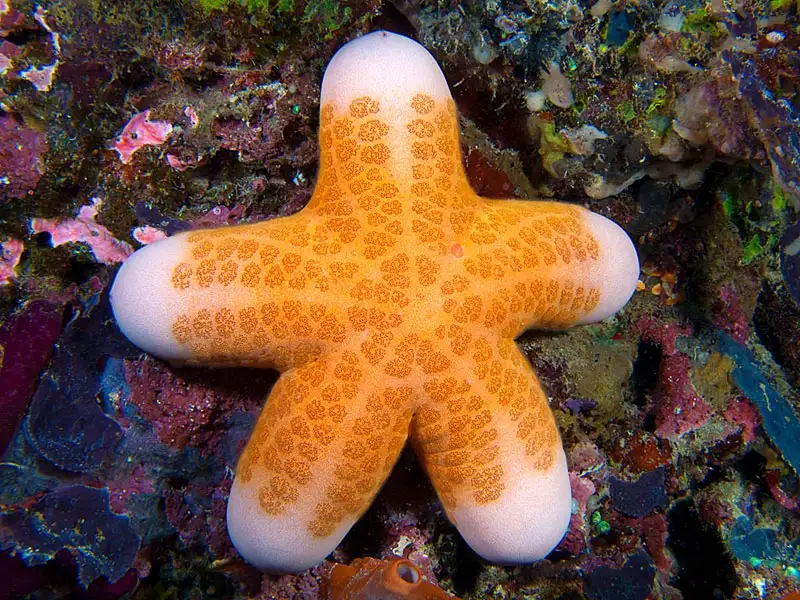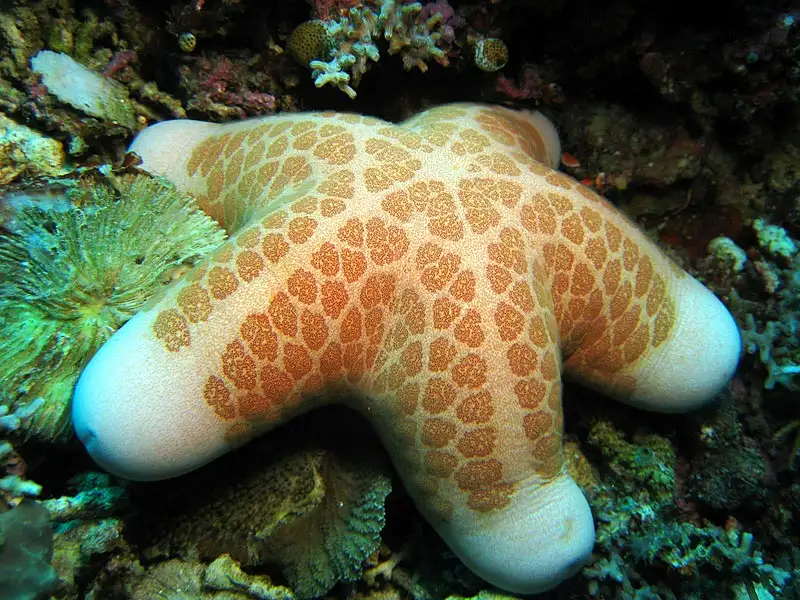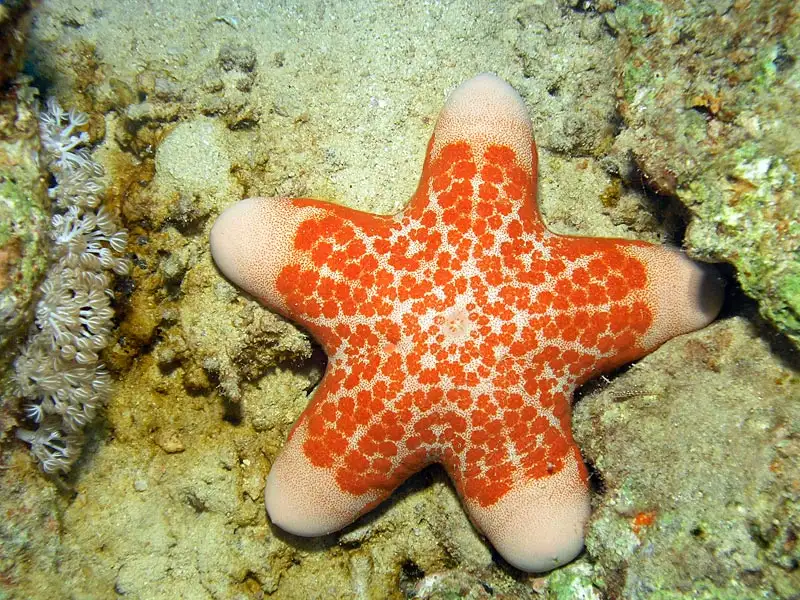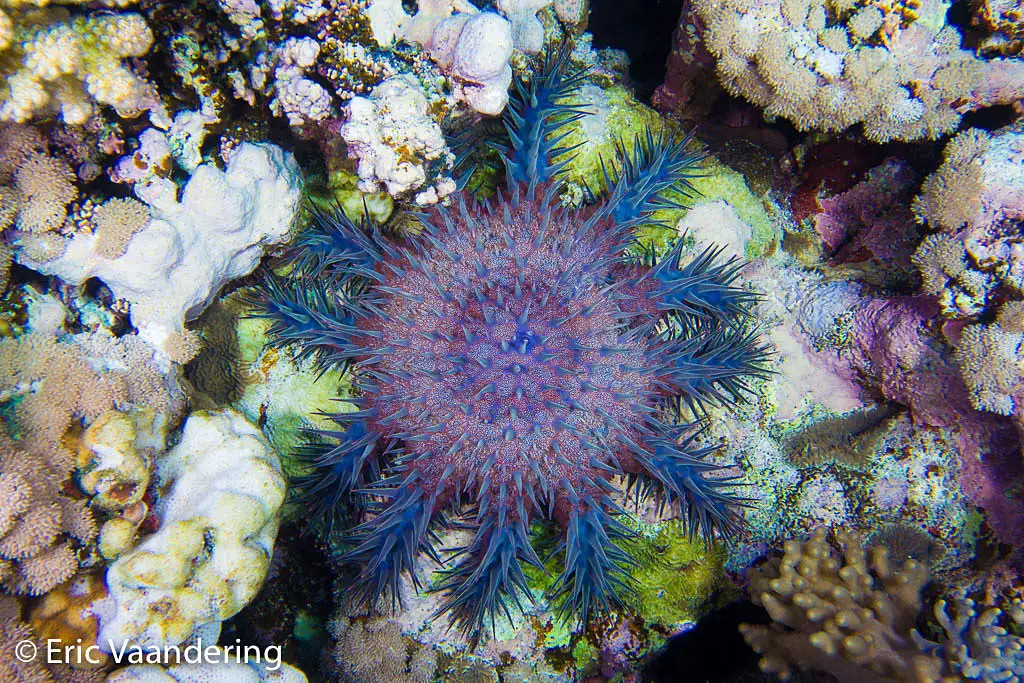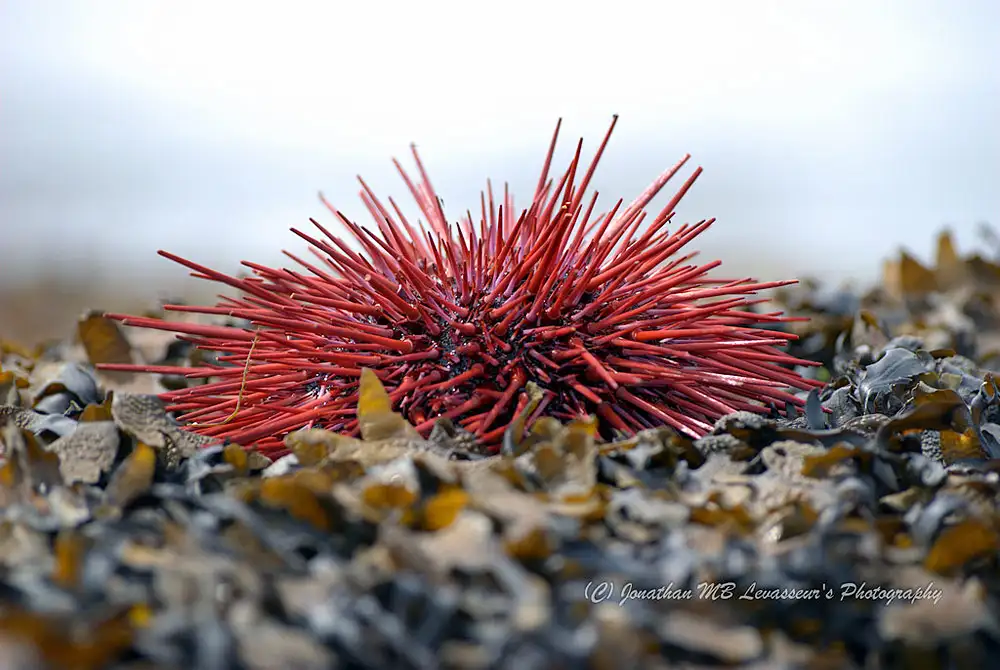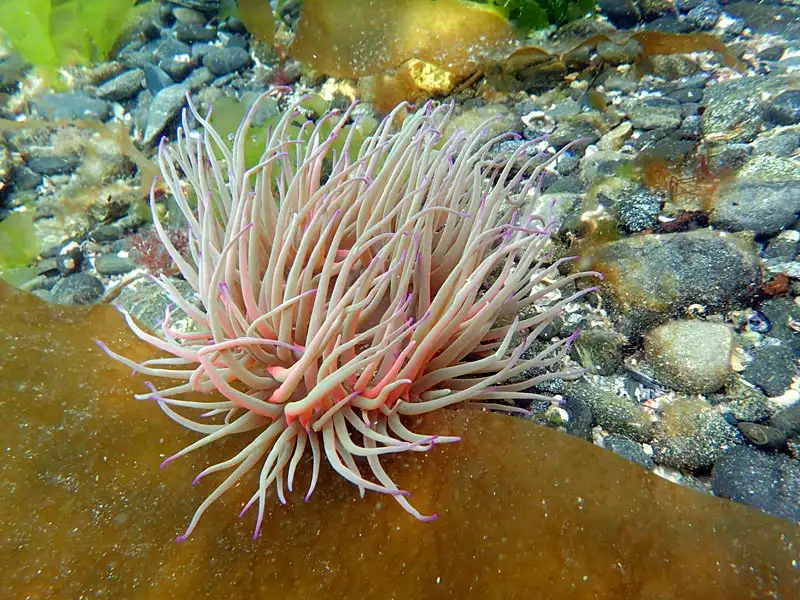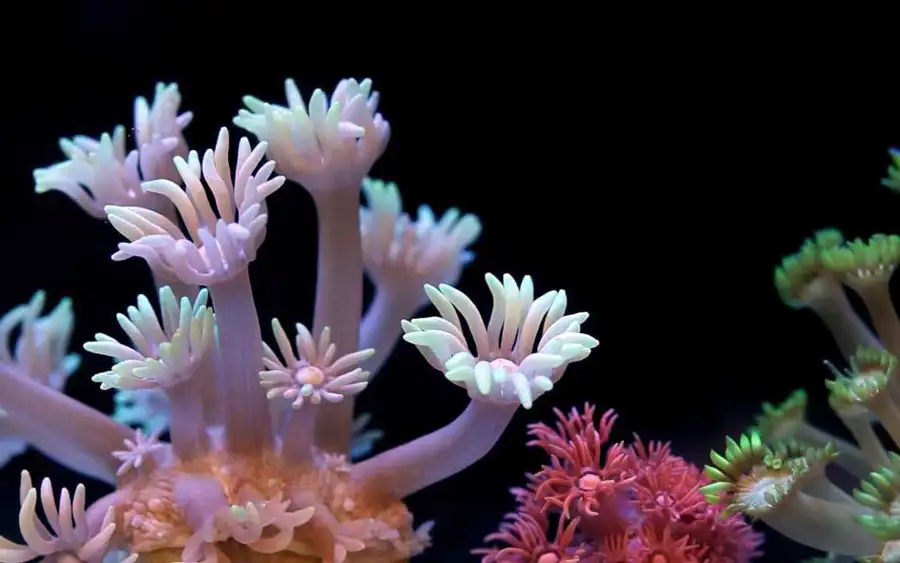Choriaster granulatus (Granulated Sea Star)
IUCN
LCBasic Information
Scientific classification
- name:Choriaster granulatus (Granulated Sea Star)
- Scientific Name:Choriaster granulatus
- Outline:Echinodermata
- Family:Oreasteridae Choriaster
Vital signs
- length:Arm‑to‑arm diameter 20–30 cm; larger individuals occur
- Weight:Variable; not standardized
- lifetime:Several years to >10 years
Feature
Short blunt arms; granulated dorsum; omnivorous/detritivorous; eversible stomach; regenerative capacity.
Distribution and Habitat
Tropical Indo‑Pacific reefs, lagoons, seagrass and rubble (1–30+ m).
Appearance
Pale pink/beige to light orange/brown; lighter arm tips; ventral tube feet and ambulacral grooves.
Details
Choriaster granulatus—the doughboy / granulated sea star—belongs to family Oreasteridae. It features short, blunt arms, a puffed central disc and a dorsum covered with granules/tubercles, making it conspicuous on Indo‑Pacific reefs.
Ecology & Biology
Diet: chiefly omnivorous/detritivorous, grazing biofilms, microalgae and small invertebrates; occasionally consumes coral or sponges.
Feeding: deploys an eversible stomach to digest food externally.
Regeneration: capable of repairing/regrowing damaged arms.
Ontogeny: juveniles with slender arms becoming stubbier as they mature.
Identification
Five‑rayed symmetry; rounded arm tips; fine granulation and tuberculation on the dorsum. Colour ranges from pale pink and beige to light orange/brown, often with lighter tips. Ventrally, ambulacral grooves and tube feet are evident, with the mouth centred.
Size & Longevity
Size: arm‑to‑arm diameter typically 20–30 cm, sometimes larger.
Life: several years to over a decade depending on conditions.
Range & Habitat
Throughout the tropical Indo‑Pacific on reefs, lagoons, seagrass and coral rubble from ~1–30+ m depth.
Conservation & Threats
Threats: habitat degradation, curio/aquarium collection and local water‑quality decline.
Guidance: adhere to no‑touch/no‑lift practices; avoid buying dried sea‑star curios.
IUCN: marked here as Not Evaluated (NE).
FAQ
Q1. Dangerous to humans? No—avoid handling to protect the animal’s water‑vascular system.
Q2. Why are some arms notched or skinny? Likely regeneration after injury or predation.
Q3. Good for aquaria? Challenging dietary/water needs and sustainability issues—generally unsuitable.
Q4. How to distinguish from Oreaster spp.? Choriaster is rounder and “puffier” with very blunt tips; oreasterids tend to be flatter with coarser ossicles.

